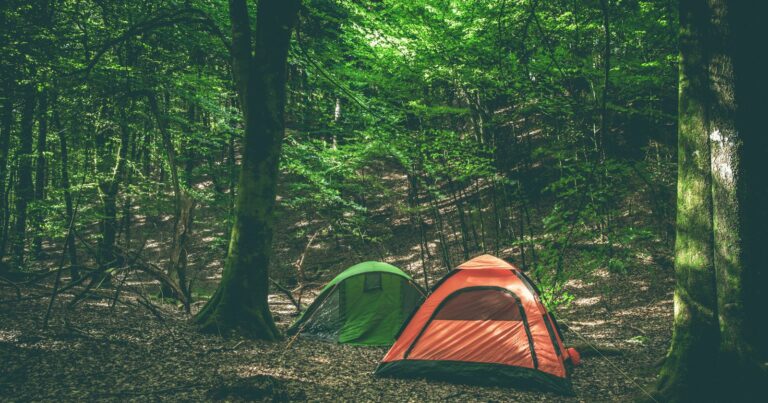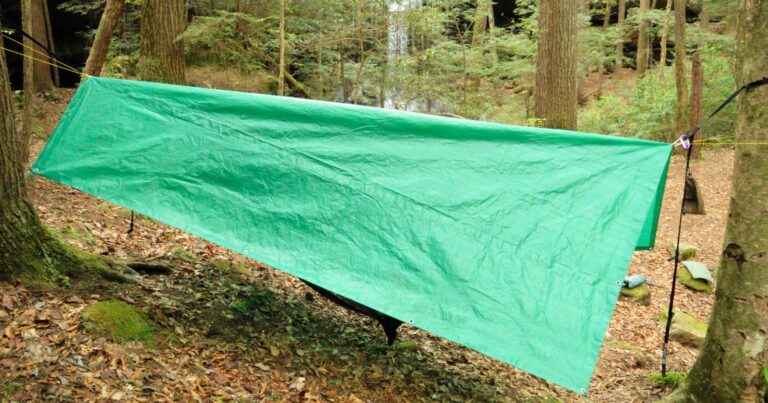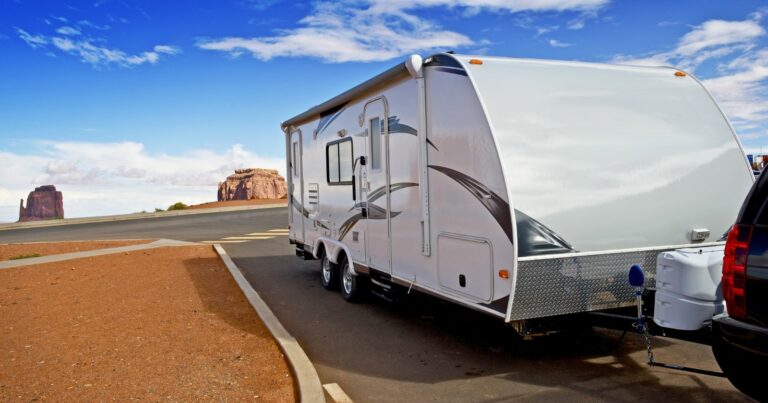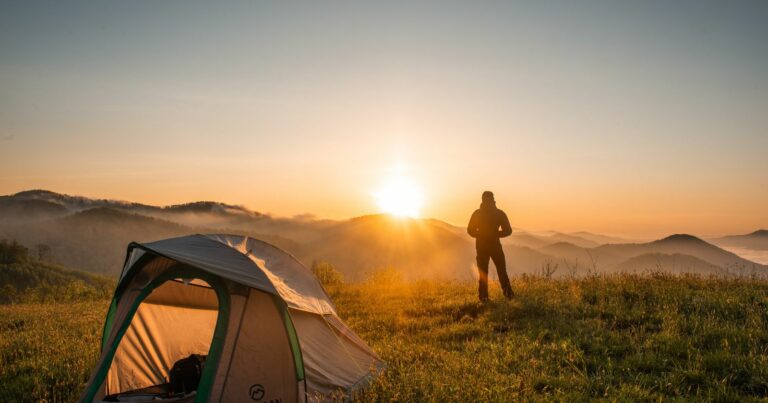Can You Set Up Camp Anywhere? Understanding Dispersed Camping Rules
Camping under the stars is one of life’s great pleasures. As you gaze up at the dazzling night sky, it feels like you can hike off into the wilderness and set up your tent wherever you please. But while that idyllic vision sounds nice, the reality is more complex when it comes to campsite rules and regulations.
Can you actually just set up camp anywhere? Or are there restrictions on where you can pitch your tent?
The answer, like most things, is that it depends. While there are some stunning free camping locations, you can’t legally set up your campsite just anywhere you want. Parks, private lands, and protected wilderness areas often have strict rules in place about camping policies.
In this article, we’ll dig into the nitty gritty details about dispersed camping options as well as locations where pitching a tent is prohibited. We’ll help shed light on the regulations so your next camping trip doesn’t start off on the wrong foot.
After all, there’s nothing worse than hiking miles into the backcountry, finding the perfect campsite with sweeping views, and being ready to rest your weary feet…only to discover you can’t actually camp there! Let’s look at camping rules on public land, private land, and prohibited locations so you can pick compliant and legal sites.
The goal is for you to feel confident that your campsite aligns with local laws. That way you can focus your energy on enjoying the magnificent nature surrounding your tent. With insights on campground rules and regulations, we’ll have you covered – allowing you to relax under the starry skies without a worry.
Public Lands Offer Dispersed Camping Options
Public lands managed by federal and state agencies provide some of the best opportunities for dispersed camping where you can camp outside of designated campgrounds.
National Forests
America’s 154 national forests contain over 300,000 miles of trails traversing stunning landscapes from coast to coast. Camping is allowed in most national forests for free with a few caveats1:
- Dispersed camping is usually permitted as long as you avoid developed recreation areas, trailheads, and private inholdings. Check specific forest rules.
- Generally you can camp anywhere more than 100-200 feet from water sources and roads/trails.
- Length of stay limits average around 14 days per site. Avoid overstaying.
- Some forests require free permits or passes for overnight use. Research ahead of time.
- Where allowed, you can also park overnight in an RV or other self-contained vehicle.
- Always practice Leave No Trace ethics and pack out all trash.
With dozens of national forests dotting the country, ample dispersed camping opportunities await in epic mountain scenery.
BLM Public Lands
America’s 245 million acres of Bureau of Land Management (BLM) public lands offer a goldmine of dispersed camping options, mainly in the Western states2. Key policies for BLM lands include:
- Camping is allowed on all BLM public lands for up to 14 days unless posted otherwise.
- Motorized dispersed camping is permitted unless prohibited. Be sure to stay on designated roads.
- Avoid setting up camp in developed recreation sites that require fees.
- Check for fire restrictions during dry seasons before having a campfire.
- BLM also manages National Conservation Lands with wilderness characteristics and greater restrictions.
From the red rocks of Moab to the remote plains of Wyoming, BLM lands are dispersed camping paradises.
State Forests and Parks
Many state park systems also allow dispersed camping in certain areas. For example:
- Minnesota offers free backcountry camping zones in state forests.
- New York allows backcountry camping at least 150 feet from roads and trails.
- Colorado permits dispersed camping on State Trust Land 500+ feet from developed facilities.
Always consult the camping policies on the website for your state’s park system. Regulations can vary significantly by state.
Where Dispersed Camping Is Prohibited
While dispersed camping grants flexibility, there are also locations where camping rules prohibit pitching a tent or parking an RV. Be sure to avoid:
- Developed recreation facilities – Campgrounds, picnic areas, trailheads and any facilities with infrastructure require staying in designated sites after paying fees.
- Private property – You must have the landowner’s permission before camping on private lands. Don’t trespass.
- Wilderness areas – These protected areas ban dispersed camping to prevent overuse. Stay in marked sites.
- Politically sensitive areas – Military bases, airports, power plants, springs, communication towers, and dams prohibit camping nearby for security reasons6.
- Culturally sensitive areas – Stay away from Native American ruins, gravesites, and any documented cultural resources.
- Ecologically sensitive areas – Avoid camping in dense vegetation, endangered species habitat, wetlands, etc. Heed any posted restrictions.
Always respect prohibited areas and temporary camping bans due to high fire danger. Pack up your tent if requested by a ranger to avoid hefty fines.
Tips for Finding Dispersed Campsites
Avoid camping headaches by carefully choosing compliant, low impact dispersed sites using these tips:
- Consult maps – Maps from Gaia GPS, avenza, and other apps can reveal free camping zones.
- Research ahead – Websites like freecampsites.net and Campendium list great dispersed options.
- Arrive early – Afternoon arrivals give ample time to assess sites before dusk.
- Scout thoroughly – Walk the area before setting up camp if possible. Ensure it’s legal, safe, and ethically suitable.
- Consider campsite impacts – Avoid repeatedly using the same fragile sites. Disperse use.
- Pack out waste – Practice impeccable Leave No Trace ethics, including packing out human and pet waste.
- Stay in communication – Share your plans with someone and consider bringing a satellite communication device.
With attentive trip planning and ethics, you can surely enjoy the freedom of dispersed camping in alignment with regulations.
Camping on Private Land
If camping on public land isn’t feasible, another option is making a temporary camp on your own private property or land belonging to someone you know. Here are some pointers:
- Consult your county/city code to see if camping is allowed. Recreational vehicle overnight parking bans may apply.
- If zoning codes prohibit camping, apply for a permit for a temporary campsite explaining the duration and reason for your stay.
- Contact your homeowners association if applicable to check whether campsites are allowed.
- On rural private land, pick a site at least 150 feet from property lines and water sources.
- Ensure your campfire meets local burn ban restrictions if applicable.
While more complicated, camping for a short duration on private land is doable with the proper clearances.
Just be courteous to neighbors by keeping noise and lights low. And be sure to dismantle your camp promptly when finished to avoid nuisance complaints.
Key Dispersed Camping Rules Recap
To recap, here are the golden rules to legally enjoy free camping on public lands:
- Stick to designated dispersed camping zones in national forests and BLM areas. They offer the most flexibility.
- Avoid developed campgrounds and any facilities with infrastructure like restrooms or picnic tables.
- Follow all posted signs prohibiting camping due to restrictions or overuse issues.
- Never trespass on private property or culturally/environmentally sensitive areas.
- Follow all fire bans and pack out all trash, food waste, and litter.
- Limit your stay to 14 days max in one spot before relocating.
- Come prepared with a map, Compass, GPS to carefully choose compliant sites.
The right campsite is waiting for you out there! Follow camping regulations and pack responsibly, then soak up the magical feeling of sleeping under the stars. Here’s to happy dispersed camping adventures!
Frequently Asked Questions about Dispersed Camping Rules
Confused about dispersed camping policies on public lands? Here are answers to some common questions:
Q: Do I need a permit to dispersed camp?
A: Typically not, unless posted otherwise. Some national forests require free permits for overnight use. Always check area-specific rules.
Q: Can I have a campfire when dispersed camping?
A: Yes, unless there are seasonal fire restrictions in effect due to drought conditions. Avoid making new fire rings and minimize campfire impacts.
Q: Where should I camp to avoid disturbing wildlife?
A: Give animals plenty of space by camping at least 1⁄2 mile from lakes, streams, known wildlife corridors and nesting areas. Keep food secured.
Q: Is dispersed camping allowed in national parks?
A: No. Dispersed camping is prohibited in National Parks. You must stay in designated campgrounds and use marked sites in most cases.
Q: Can I take an RV dispersed camping?
A: Yes, RVs are allowed in many areas unless posted otherwise. Ensure you park on durable surfaces and move locations every 14 days.
Q: Is dispersed camping safe for solo travelers?
A: Generally yes, with proper precautions. Stick to well-traveled areas, share your plans, bring emergency devices, keep food secured, and choose sites wisely.
Q: What is the best app for finding dispersed campsites?
A: Apps like Gaia GPS, Avenza Maps, OnX Offroad, and Backcountry Navigator can detail free camping areas and helpful terrain info like water sources.
Q: Can I pull off anywhere and camp along highways?
A: No. Roadside camping is illegal in most states along interstate highways. Stick to authorized dispersed zones.
Q: How do I leave no trace at my campsite?
A: Pack out all trash and waste. Dismantle any fire rings or structures. Avoid digging trenches. Scatter foreign firewood. Restore the site to natural conditions.
Consult local land agencies to best understand dispersed camping rules in the area you’ll visit. With attention to regulations, you can safely enjoy stunning backcountry campsites.







